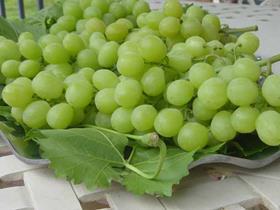
After an earlier but somewhat slow start, the early regions of South Africa, particularly the Orange River region, may well exceed their earlier forecasts.
Industry body SATI previously said the original expected increase was mainly due to new plantings coming into production, as well as a general adjustment towards normal harvest volumes in areas affected by adverse weather during the previous season. Now sources in the grape sector say a 20-carton crop may well be achieved in the Orange River, compared to last year’s 16.7m cartons.
SATI has not yet revised its estimate of 52.9m-54.3m (4.5kg) equivalent cartons for this season.
With the season being earlier than normal, South African growers and exporters may well be in a better position to get more grapes to markets in Asia before the Chinese New Year period. However, industry sources say the product specification for supply to the Far East is very specific and South African volumes have to compete with demand from other sales regions.
During the first half of December most South African exporters have been concentrating on Europe and the UK where their income is boosted by a decline of the South African currency against the British pound and the euro. The South African rand has now also lost further ground to the US dollar, which is likely to boost returns from Asian markets.
It is generally expected that early season shortages in most markets will soon be replaced by heavier supply, and this will force exporters to ship more fruit to Asia. It is therefore likely that middle and late-season supply to the Far East could rise compared with last year.
The mid- to late-season Crimson Seedless is South Africa’s flagship grape cultivar in Asia. In recent years there have been extensive plantings of this variety in the Hex River Valley, where both appearance and quality have always been superb.
Well-known Hex River grower Francois Rossouw says at this early stage prospects for Crimson Seedless are very good.
“We are confident of a good season and have been in touch with our customers who are keenly awaiting our first fruit,” he says.
Rossouw’s Mooigezich Estate has during the past few years focused its marketing activities on Asia. “We are selling about 60 per cent of our grapes in this region,” he says.
The Hex Valley has always been considered a late growing-region, but this season growers there will start packing their Prime and Starlight crop barely four weeks after the Orange River producers started harvesting.
Anton Viljoen of AS Viljoen Farms confirmed that the company will start packing two weeks before Christmas. Unfortunately for buyers in Asia, this fruit will be destined mostly for the UK and Europe.



